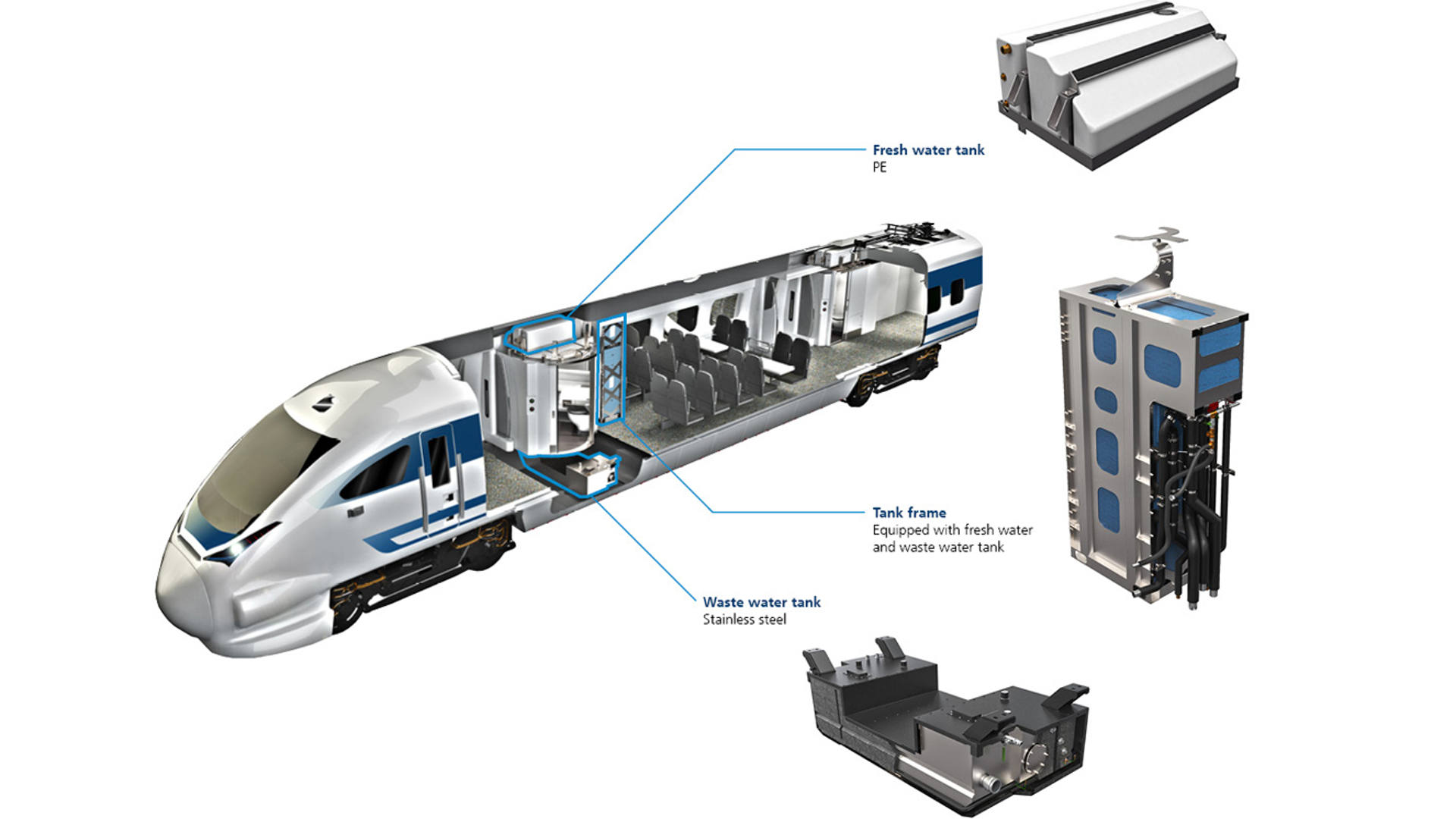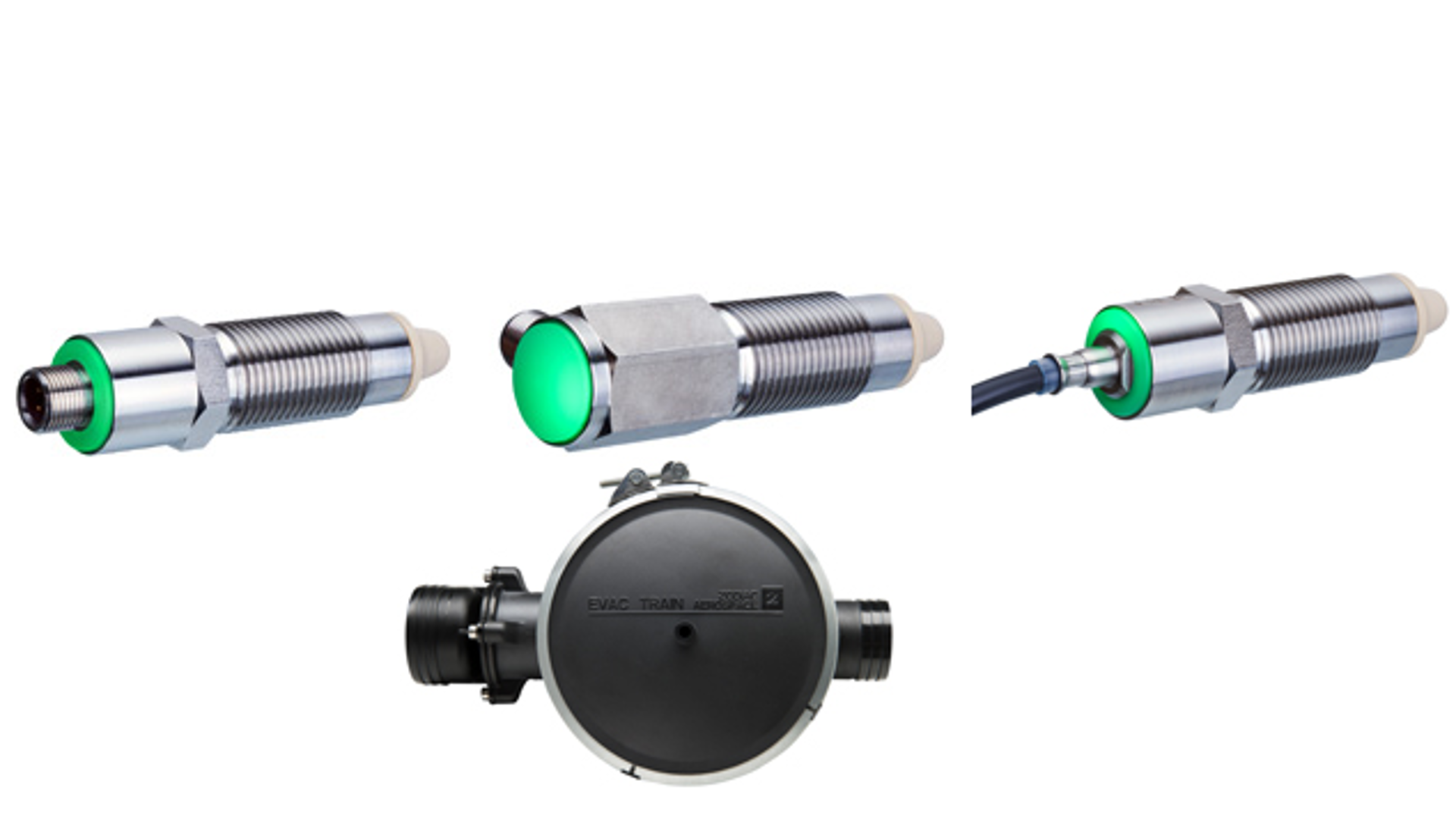
Optimized treatment for fresh, grey and waste water is essential for any vacuum toilet solution. As the world’s leading provider of vacuum systems for trains, Evac offers all the components needed for complete, fully integrated solutions from a single, one-stop source – from tanks and tank racks as well as grey water systems through to water panels including water heaters and pumps.
Essential options from a one-stop source
The advantages are obvious: By individually tailoring all key components for any given project and choosing the combinations that work best, Evac makes sure to meet even the most complex project requirements spot on. Frictionless interplay and seamless interfacing between all parts are guaranteed. Furthermore, the tanks are designed for easy maintenance and make optimum use of every millimeter of available space.

Compliance
Fire protection EN 45545 HL2 Welding EN 15085 Bonding DIN 6701 Stress calculation DIN EN 12663-1, APTA standard etc. Fresh water tank draining DIN EN 16362:2014-03
Accessories
Grey Water Unit (GWU)
When high-speed trains pass one another or run through tunnels, ambient pressure differences arise. These pressure waves can be transferred through the grey water piping into the toilet cabin, which may lead to unpleasant pressure in the ears of passengers.
Evac’s grey water unit (GWU) prevents fluctuations in cabin pressure. The reliable and well-proven GWU complies to the fire protection standard EN 45545 and is easy to install, directly under the wash basin.
Liquid Level Guard
Evac’s newly developed liquid level guard represents the state of the art in measuring technology. Made of stainless steel, it is robust, cost-efficient and extremely precise. By measuring fresh, grey and waste water levels electronically instead of mechanically, it is both more exact and fault resistant than conventional devices. Paper, incrustrations and other deposits are ignored during the measurement process. Real-time electronic transmission of the generated data allows to trigger active countermeasures (e.g. against blockages), and additional data can be used to support preventive and condition based maintenance.
